National Mall Building
(By: Chip and Jackson Schultz)
2 Seperate Locations:
National Mall Building
Independence Ave at 6th St SW, Washington D.C., 20560
Steven F. Udvar-Hazey Center
14390 Air and Space Museum Pkwy, Chantilly, VA, 20151
Visiting Hours: 10:00am to 5:30pm
Cost: Free
Website: www.nasm.si.edu
National Mall: (202) 782-2071
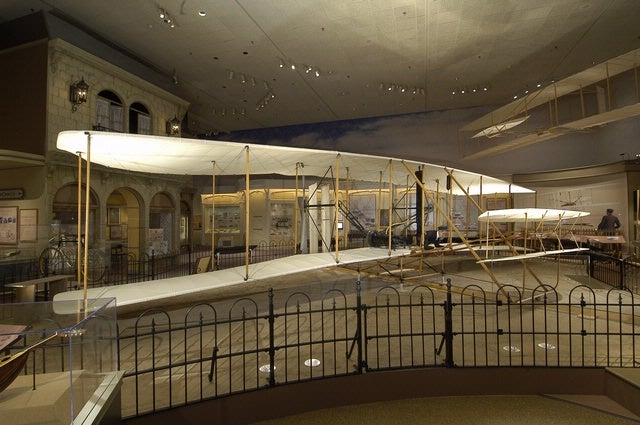
The original 1903 Wright Flyer: Built and flown by Wilbur and Orville Wright on December 17, 1903, at Kitty Hawk, North Carolina, the 1903 Wright Flyer became the first powered, heavier-than-air machine to achieve controlled, sustained flight with a pilot aboard.
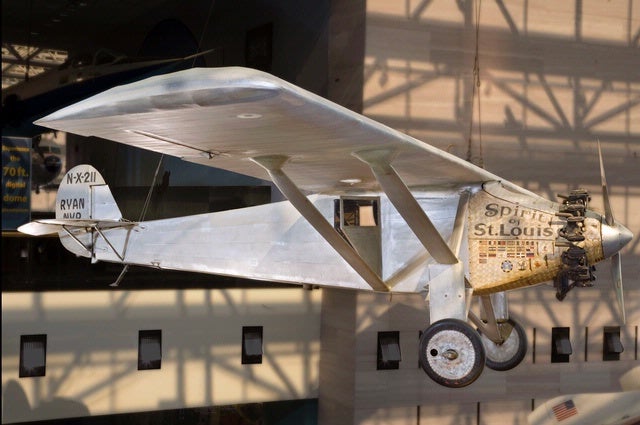
Spirit of St. Louis: On May 21, 1927, Charles A. Lindbergh completed the first solo nonstop transatlantic flight in history, flying the Spirit of St. Louis 3,610 miles between Long Island, New York and Paris, France in 33 hours, 30 minutes.
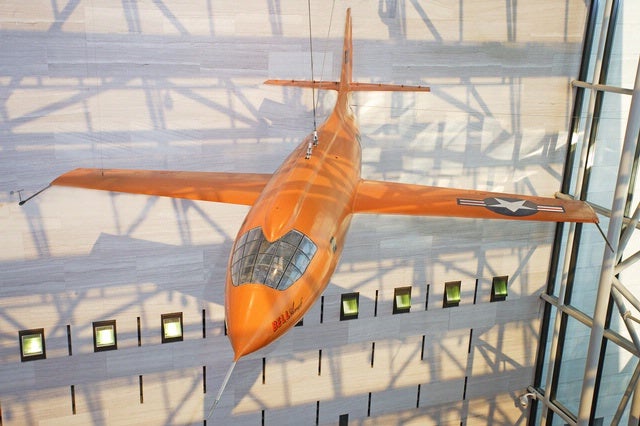
Bell X-1 "Glamorous Glennis": On October 14, 1947, the Bell X-1 became the first airplane to fly faster than the speed of sound. Piloted by U.S. Air Force Capt. Chuck Yeager, the X-1 reached a speed of 700 miles per hour, Mach 1.06, at an altitude of 43,000 feet. Yeager named the airplane "Glamorous Glennis" in tribute to his wife.
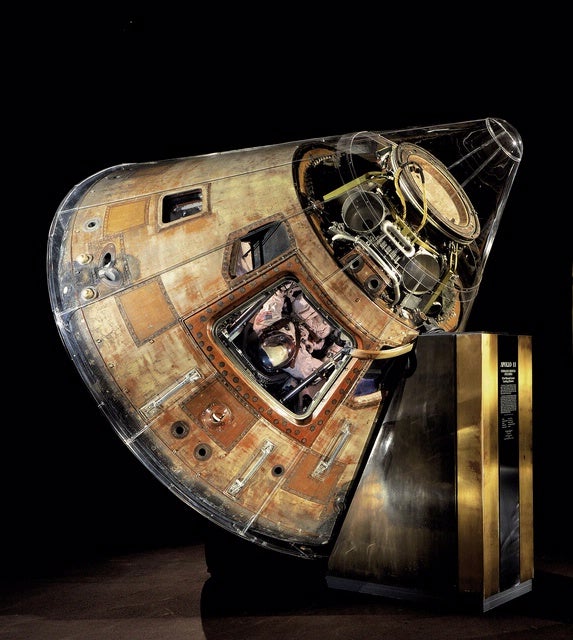
The Apollo 11 Command Module "Columbia": NASA astronauts Neil Armstrong, Edwin "Buzz" Aldrin, and Michael Collins traveled to the Moon and back aboard this command module "Columbia" in July 1969. During that historic eight-day mission, only 66 years after the Wright brothers' first flight, Armstrong and Aldrin became the first humans to walk upon the surface of another world.
The A&S Museum Steven F. Udvar-Hazy Center, near Washington Dulles International Airport, is the companion facility to the Museum on the National Mall. The building opened in December, 2003, and provides enough space for the Smithsonian to display the many aviation and space artifacts that cannot be exhibited on the National Mall. The two sites together showcase the largest collection of aviation and space artifacts in the world:
.
.
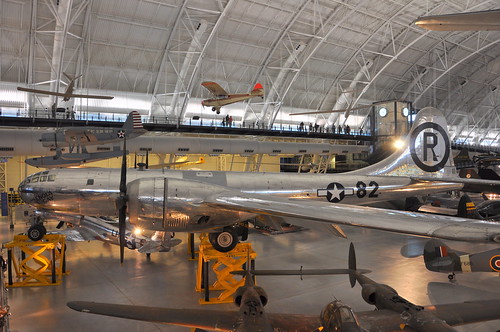
Boeing B-29 Superfortress "Enola Gay": On August 6, 1945, this Martin-built B-29 dropped the first atomic weapon used in combat on Hiroshima, Japan.

Bell UH-1 Huey: This Huey helocopter is like the one flown by Capt. Ed "Too Tall" Freeman in the Ia Drang Valley during the Vietnam War. On November 14th, 1965, a U.S. Battalion was surrounded and outnumbered by the emeny. In the heat of battle, when the landing zone was declared too dangerous and closed, and all hope was lost, an unarmed helicopter came to their aid bringing water, much needed supplies, and ammunition. According to survivors of the battle, the unarmed Huey returned more than 13 times and evacuated the wounded each trip. That day, more than 30 wounded soldiers were flown to safety by Capt. Freeman.
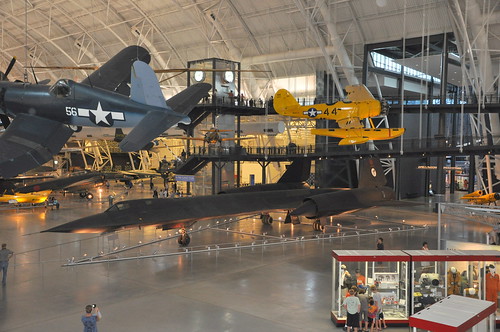
Lockheed SR-71 Blackbird: This Blackbird, the world's fastest jet-propelled aircraft, accrued about 2,800 hours of flight time during 24 years of active service with the U.S. Air Force. On its last flight, March 6, 1990, it set a speed record by flying from Los Angeles to Washington, D.C. in 1 hour, 4 minutes, and 20 seconds, averaging 2,124 miles per hour. At the flight's conclusion, it landed at Washington-Dulles International Airport and was turned over to the Smithsonian.
Space Shuttle Enterprise: The first Space Shuttle orbiter, "Enterprise," is a full-scale test vehicle used for flights in the atmosphere and tests on the ground; it is not equipped for spaceflight.
But to truly understand our passion for aviation you have to read how it evolved:

One of the first books that I remember reading was 'Yeager', an autobiography by General Chuck Yeager, the first man to break the sound barrier. On October 14, 1947, Chuck Yeager flew the experimental Bell X-1 airplane, nicknamed 'Glamorous Glennis' after his wife, near Edwards Air Force Base in southern California. And for the first time in history the sound barrier had been broken, and a sonic boom was heard, as Yeager piloted Glamorous Glennis at the never-before-flown speed of sound, commonly referred to as Mach 1 (+/-760 mph). Fifty years later, on the 50th Anniversary of the U.S. Air Force, Edwards AFB, and Yeager's historic flight, he again took to the skies above Edwards. But this time he was in the cockpit of an F-15 Eagle; and this time I was there, on the ground below. I watched with my own eyes and listened to that sonic boom as Chuck Yeager once again broke the sound barrier. I stood motionless as he landed, climbed out of the cockpit, and addressed the crowd. As General Chuck Yeager walked past me, I thrust out my anniversary program and got his autograph - indeed, I will never forget that day.
In August on 2006, when Jackson was only 4 years old, he and I went to an amazing presentation at the Warhawk Air Museum in Nampa, Idaho. The project manager of 'Glacier Girl', and her most recent pilot, was giving a presentation of their multi-million dollar recovery of a lost P-38 from World War II. On July 15, 1942, a flight of six P-38s and two B-17 bombers, with a total of 25 crew members on board, took off from Presque Isle Air Base in Maine headed for the U.K. What followed was a harrowing and life-threatening landing of the entire squadron on a remote ice cap in Greenland. Miraculously, none of the crew was lost and they were all rescued and returned safely home after spending several days on desolate ice. Fifty years later a small group of aviation enthusiasts decided to locate that squadron, that had come to be known as "The Lost Squadron," and to recover one of the the lost P-38s. It turned out to be no easy task, as the planes had been buried under 25 stories of ice and drifted over a mile from their original location.
One of my greatest life experiences was being invited to the home of Ed "Too Tall" Freeman. I spent a couple of hours interviewing him and learning of his experiences in the Ia Drang Valley during the Vietnam War. Portrayed in the Mel Gibson movie 'We Were Soldiers', Ed was told that, at six feet four inches, he was "too tall" for pilot duty. The phrase stuck and he was known as "Too Tall" for the rest of his career. During our interview, Ed told me of the time in the Ia Drang Valley that enemy fire around the landing zones was so heavy that the medical evacuation helicopters refused to fly in to rescue the wounded soldiers. So he and his commander, Major Bruce Crandall, volunteered to fly their unarmed, lightly armored UH-1 Huey helicopters in support of the embattled troops. Ed Freeman made a total of fourteen trips to the battlefield, bringing in water and ammunition and taking out wounded soldiers under heavy fire. By the time he had landed his severely damaged helicopter, Freeman himself had been wounded four times by enemy fire. For his actions in the Ia Drang Valley, Capt. Ed "Too Tall" Freeman was presented with the highest military award - the Congressional Medal of Honor. Each of my children had the opportunity to meet and shake the hand of this true American hero on Memorial Day 2008. Less than three months later, Ed Freeman passed away. I had the extended honor of attending his funeral and hearing his eulogy presented by his Ia Drang commander, Major Bruce Crandall.
So it's no surprise that Jackson has developed a keen sense of aircraft identification and a true passion of space exploration. One of his favorite things to do is to lie down in the front yard and stargaze. He is fascinated with finding the Big Dipper, then lining up it's two forward stars to locate the North Star and then the Little Dipper. Jack's all-time favorite airplane is the A-10. So for his 8th birthday he got a once in a lifetime treat. A friend of mine is a National Guard pilot here in Boise - AN A-10 PILOT! So he invited Jack and 7 of his buddies out to the A-10 hangar. They got to see the jets parked out on the flight line; climb up on the ones inside the hangar; and they each got to fly the A-10 simulator!
For Jackson's recent science project, he chose to write a letter to an astronaut. Michael J. Smith was the pilot of the Space Shuttle Challenger that blew up in 1986. The following are Jackson's words to the deceased Mr. Smith:
For Jackson's recent science project, he chose to write a letter to an astronaut. Michael J. Smith was the pilot of the Space Shuttle Challenger that blew up in 1986. The following are Jackson's words to the deceased Mr. Smith:
Dear Mr. Smith,
My name is Jackson Schultz. I go to Trail Wind Elementary School in Boise, Idaho. I am 9 years old and I am in Ms. Hoover’s 3rd grade class. We are studying about our solar system and astronomy in science. For my final project I chose to write a letter to an astronaut. I am writing to you because you have a cool story.
You graduated from the United States Naval Academy in 1967 and then you were an A-6 pilot during the Vietnam War where you earned the Navy Distinguished Flying Cross and 13 Strike Flight Air Medals. In 1980 you became an astronaut candidate for NASA. You were in the Space Shuttle Challenger that blew up 73 seconds after liftoff on January 28, 1986. I am sorry that your Space Shuttle blew up. After you died, you were awarded the Congressional Space Medal of Honor.
If I could talk to you, I would want to know when you became interested in flying. I would also want to know if it is hard to be an astronaut and what it was like during lift-off on the Challenger Spaceship.
My great-grandpa Roberts was in the Navy and my dad was in the Marines.
This spring I am going to Washington D.C. with my family. We are also going to visit the U.S. Naval Academy, where you went to college. When we go to Arlington National Cemetery, I will drop this letter off by your grave. I believe that you are a hero because you gave your life the day you blasted off into space.
Mr. Smith, I want to be a pilot just like you, go to space, and be the first human to step foot on Mars. When I go to heaven, I can’t wait to shake your hand.
Sincerely,
Jackson Schultz
.
.


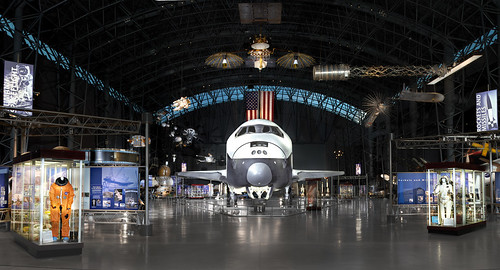








No comments:
Post a Comment